West Africa
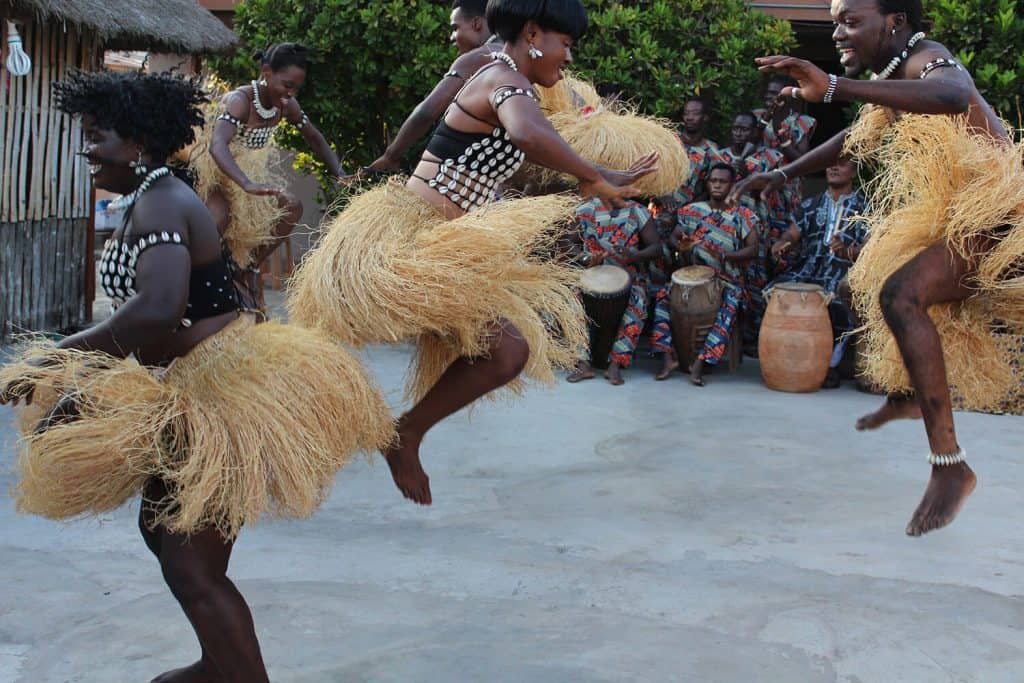
Kusun Dancers in Full Flight
Ray’s African Drumming Classes in Melbourne draw on rhythms and rhythmic ideas from a number of countries in West Africa. These countries include Ghana, Ivory Coast, Guinea, Mali, Senegal and Burkina Faso.
Ray’s African Drumming Classes cover a range of styles from West Africa and also use a variety of drums.
Participants first start off on Djembe and Dun Duns but may also then move to other drums and percussion instruments from across the region.
Ray’s intermediate and more advanced classes can include rhythms from Brazil, Cuba and other Latin American countries as well as continuing with the Djembe and developing their understanding of more complex West African rhythms.
West Africa is home to a rich history and tradition of music, drumming, song and dance. Many different ethnic groups make up the population of these countries and each group has their own distinctive culture, music, drums and drumming. Each ethnic group also has their own unique set of drumming rhythms and songs used for particular occasions.
Traditional Group from The North of Ghana
There are several traditional rhythms that make up the Djembe repertoire and Ray’s classes introduce you to a number of these rhythms, which are then developed and expanded upon as you make more progress. These traditional rhythms were first played to commemorate traditional festivals and important ceremonial occasions but are now played for entertainment as well.
The Djembe drum, which is one of the main drums used by Ray in his classes, features prominently in the drumming styles and rhythms of Guinea, Mali, Burkina Faso, Ivory Coast and Senegal. Today, countries like Ghana are also using the Djembe more while the Ghanaian Kpanlogo drum is still a traditional popular drum used in the music of Ghana.
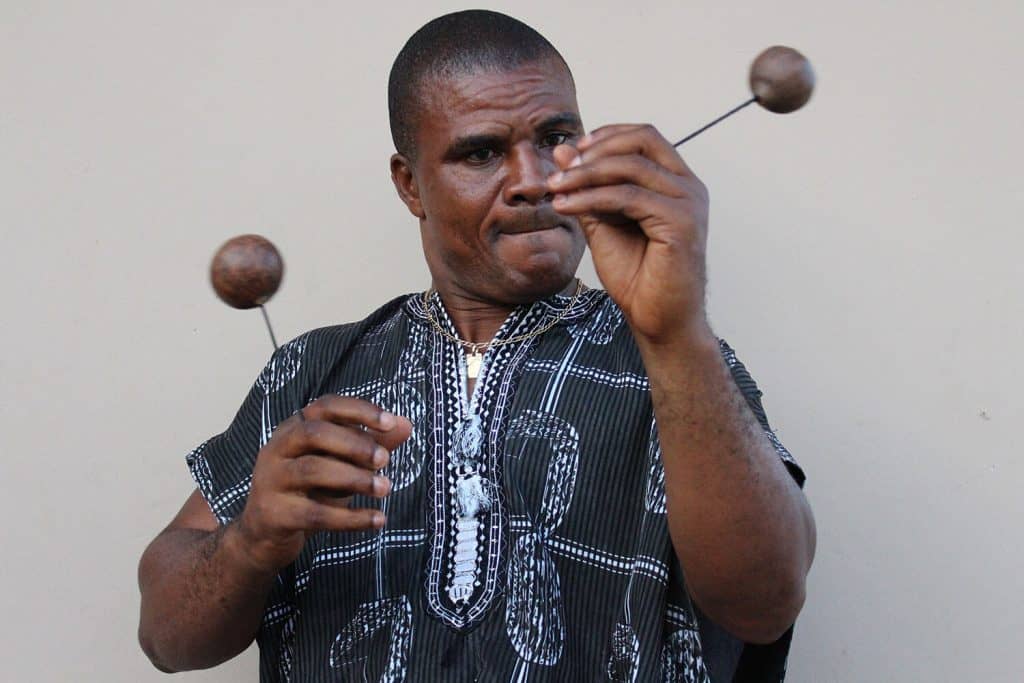
Nii Tettey Tetteh Playing Aslatua
Likewise in Senegal a drum called the Sabar played with a stick in one hand is the traditional drum of the Wolof people of Senegal and also features prominently together with the Djembe drum in traditional music from Senegal.
African Bass drums known by their generic name Dun Dun are also used in Ray’s classes to accompany the Djembe. These drums provide the low end to the higher tuned Djembes and are always played together with the Djembe in traditional drumming groups.
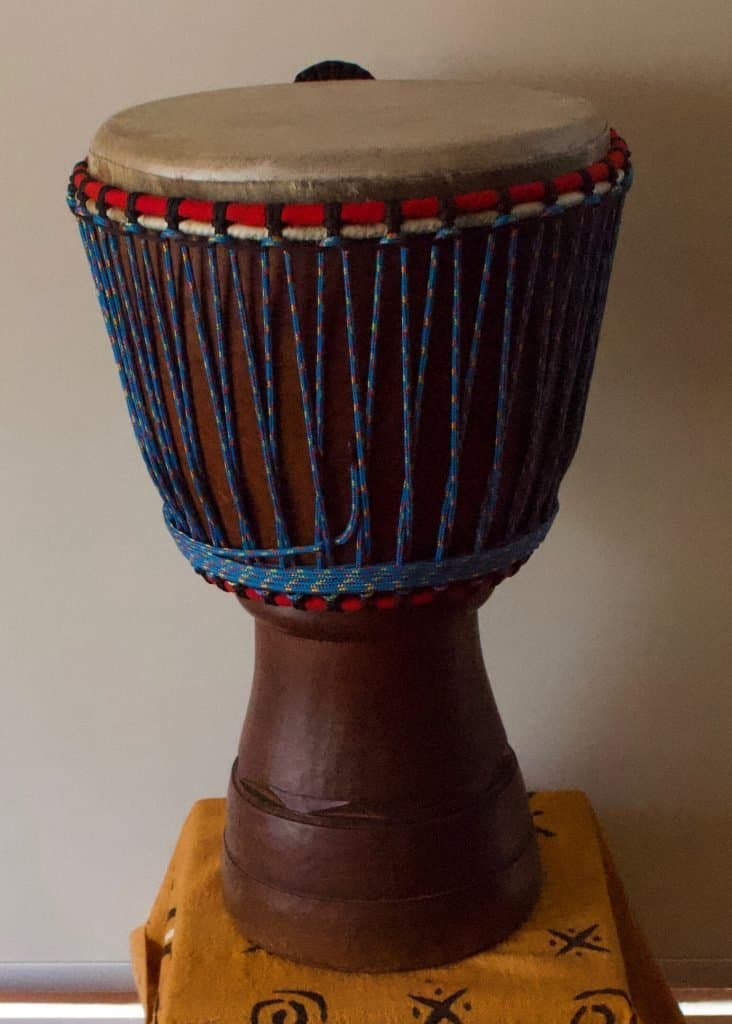
Djembe Drum
The Djembe drum originated in the West African region that encompasses parts of Guinea, Mali, Burkina Faso , Ivory Coast and Senegal. Although the Djembe drum is now used by many ethnic groups it is said to come from the group of people known as Mandinka. (Also known as Malinke and Mandeng).
As the popularity of this drum spread other cultural groups adopted it and added their own rhythms to the Djembe repertoire.
We also see slightly different styles of playing the Djembe across the West African region. Similarly the Dun Dun drums used to accompany the Djembe also vary in playing styles. Some ethnic groups use only two duns while other use three. Sometimes bells are used at the same time while others don’t use the bell. Depending on the occasion and the ethnic group, other instruments are also used with Djembe and Dun Duns.
The Stringed instrument the Kora is used by some groups while an African Wooden Xylophone called the Balaphone is used by others. In countries like Guinea, Mali, Burkina Faso and others where the Djembe drum is one of the more popular drums, a typical ensemble will consist of three Djembe drums and three Dun Dun drums plus other instruments like different types of shakers. There are usually two Djembes that play the support rhythms while the lead Djembe plays the solo and the “calls” or phrases that direct the ensemble.
The Dun Dun drums provide the bass sounds or bottom end.
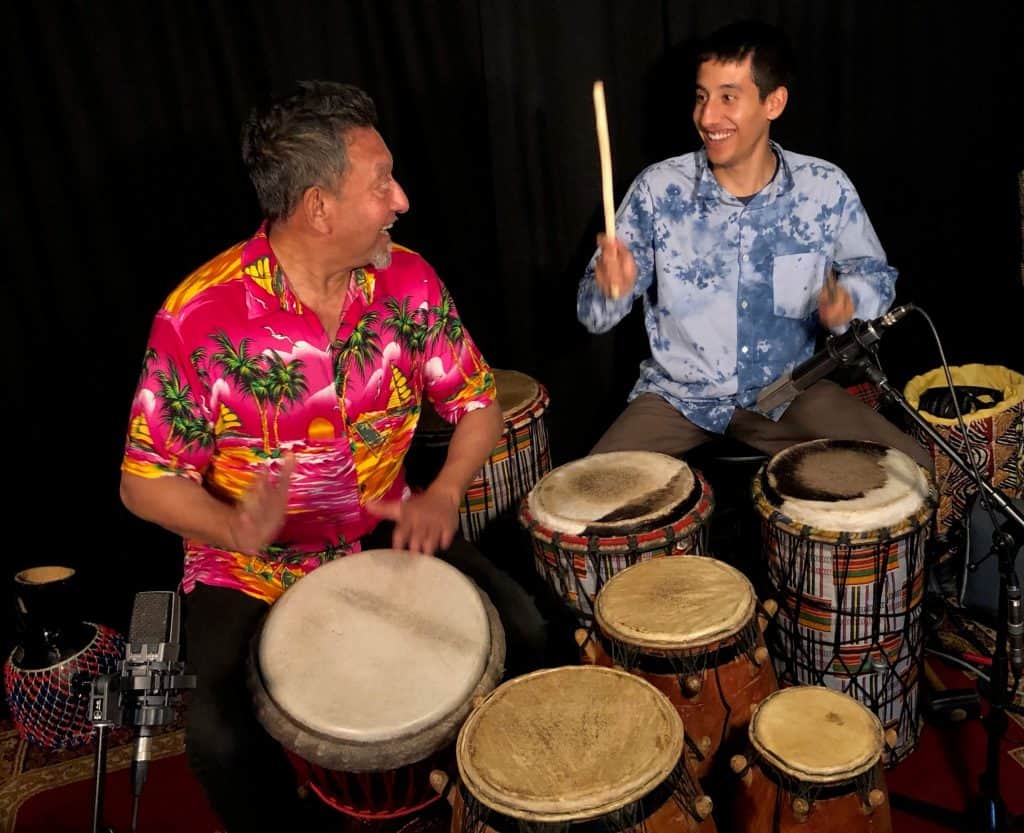
Ray on Djembe and Lucky on Dun Duns
In countries like Ghana where I have spent a lot of time studying and playing, many other drums are used as well as the Djembe. The popular drum in Ghana is the Kpanlogo drum while there are many types of drums played with the sticks as well.
The Ewe people of Ghana play a very complex and sophisticated drumming style on a set of drums that include three barrel shaped drums called Sogo, Kidi and Kanga. The lead drum is known as the Atsimevu.
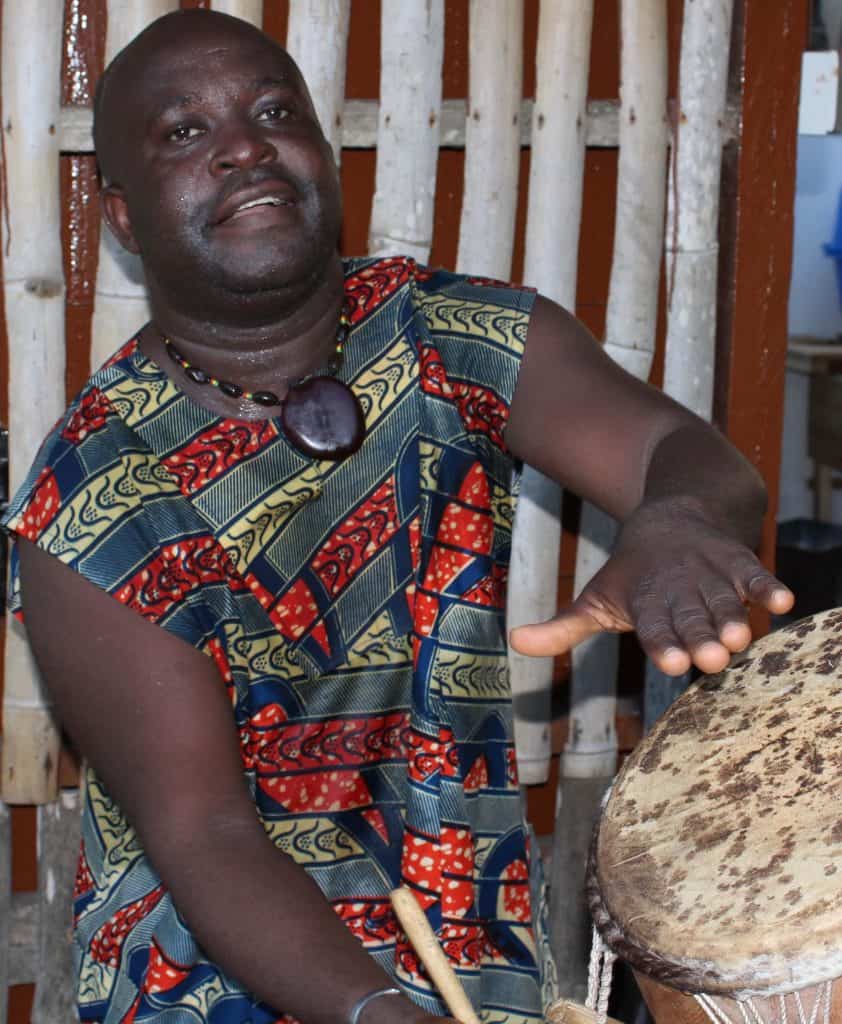
Ghanaian Master drummer Adotey on Ewe lead drum Atsimevu
In Ghana drums that are played for ceremonial occasions for chiefs and royalty are know as “Fontonfrom” or “Obonu” drums. Each ethnic group has their own style of drumming and drums with some overlap depending on the area.
Live performance of Fume Fume rhythm from Nii Tettey Tetteh and The Kusun Ensemble of Ghana … a group that Ray works closely with on his tours to Ghana.
There are hundreds of drums used to play music in West Africa and each drum has its own sound.
Ray’s classes cover rhythms from Guinea, Mali, Burkina Faso and the Ivory Coast and Ghana which feature the Djembe drum and Dun Dun drum. Some rhythms Ray teaches from Ghana use a drum known as the Kpanlogo drum.
Kpanlogo drums are shaped like the Latin conga drum and played with the hands, similar to the Djembe. Cowbell patterns feature prominently in Ghana drumming and the Dun Duns play less of a role unlike in the rhythms from Guinea. There are also many other types of Ghanaian drums played with sticks and several rhythms that are unique to these drums.
Rhythms from the Ivory Coast are also very interesting and can traditionally feature very fast foot movements in the dance. These rhythms also use Djembe and Dun Duns. Rhythms that Ray learnt in the Ivory Coast also feature as part of his classes on African Drumming.
Another popular drum that Ray teaches his more advanced students is a “squeeze drum” played under the arm and squeezed to change the pitch. This drum, which is also known as a Talking Drum, is found across many countries in West Africa. In Senegal this drum is called the “Tama” and it is called “Donon” in Ghana.

Tettey playing Kpanlogo Drum
Ray Demonstrates the Talking Drum.
Sometimes other instruments are used to accompany the Djembe depending on the type of music being played. Wooden xylophones called Balaphones, Harp like instruments called the Kora and Ngoni, Bamboo Flutes and today electrified instruments like Guitars and Keyboards can be played with the Djembe drum and other combinations of drums and percussion instruments.
Ray performing on The Wooden Xylophone called the ‘Gyil”
Ray’s travels in West Africa have led to him studying with master musicians from Ghana, Guinea, Burkina Faso, Ivory Coast and Mali. Through these studies Ray has understood the culture that gave birth to this music and the cultural context that the rhythms are played in.
He has also learnt how the traditional forms of the music have changed as people moved from their village life to the cities and how these changes have affected the rhythms. This depth of knowledge gives Ray a deeper insight into the music he teaches and adds to the quality of the lessons giving the lessons valuable historical and cultural context.
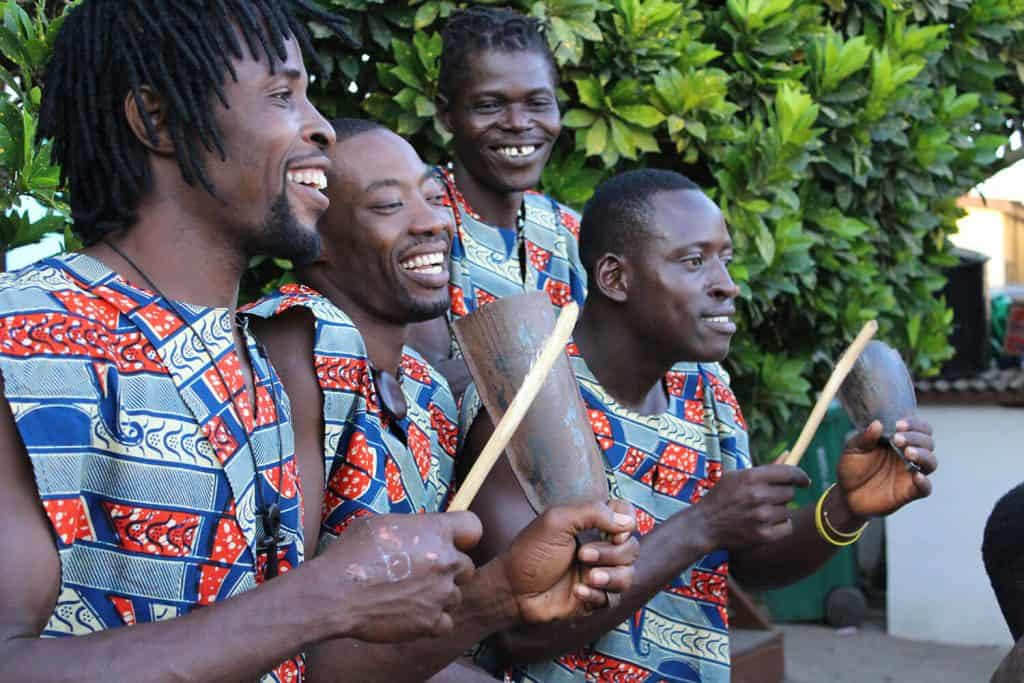
Kusun Ensemble Bell Players